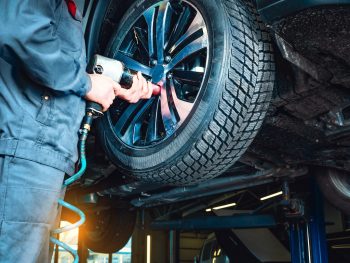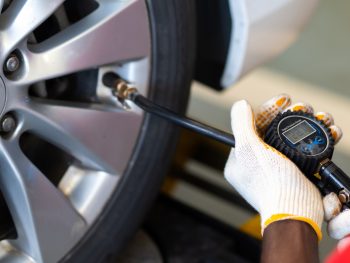Six takeaways from i247’s new white paper on the evolving tyre landscape
A comprehensive white paper is now out from i247 Group to help fleets better understand the changing tyre industry. Natalie Middleton looks at the six key points.
The automotive sector is currently going through one of the most radical periods of change ever – bringing significant impacts and challenges, not only for the tyre industry but also for fleets.
A new white paper, available online here, is now out from i247 Group to help spotlight the issues and advise fleets on key considerations for the changing face of tyre management to help them keep vehicles and drivers on the road for longer.
Titled ‘The evolving tyre landscape – what fleets need to know’, the white paper draws on the firm’s 30 years plus of tyre industry expertise and its work in delivering outsourced, white-labelled tyre management solutions across the entire tyre supply chain.
It’s the first time that the company has produced a white paper on tyres.
David Legg, director of tyres for i247 Group, says: “We felt it was critical to raise the visibility of what’s happening in the tyre industry right now.
“I’ve worked in the tyre sector for 35 years and the current pace of change and innovation is unlike anything I’ve ever seen. A number of factors have come together to radically change the tyre landscape – not least electric vehicles and the focus on sustainability.
“The paper provides real insight for fleets on the tyre market and what they need to consider to ensure continued fleet efficiency.”
Key points from the paper include:
The rise of electric vehicles and how to choose the right tyres
The increased use of electric vehicles on fleets brings big considerations for tyre management.
This includes the need to fit the right tyre due to the increased wear, greater tyre noise, demand for long range and the overall increase in total cost of ownership.
However, i247 says fleets “are going to have to be flexible” around replacement EV tyres. Some vehicles are designed to go on specific tyres but most major brands now state their whole range is EV compatible, ensuring optimum performance.
But fleet considerations over vehicle usage and operation will still need to be considered, alongside manufacturer innovations in range optimisation and noise reduction.
Legg says: “If you’re a local utility, you may never be doing a 200-mile range, but you could be driving in adverse conditions. If you’ve always fitted an all-season tyre, then that is likely the best tyre for your vehicle. Stick with what you’ve got. Make sure it’s EV-compatible; the manufacturer will tell you if it is. Because surely, it’s better to keep the vehicle on the road than fit the tyre it came with.”
He adds: “If you’re bouncing around the countryside in a utilities van, noise isn’t going to be up there on your agenda; driving a Tesla down the M4, it probably is. The only way we can describe it is that, as with Formula One, you have a choice of tyres, you have to choose the best tyre for you to get around how you want to win your race. It’s exactly the same with your fleet and about what is most important. If you look at the data of your fleet, how it wears, how it works, that will give you your insight on what’s best to fit to your vehicles.”
Driver training will also become increasingly important in the switch to EVs – helping to slow tyre wear rates – along with ensuring tyres are correctly inflated, backed up by vehicle walkaround checks
Cost challenges in the tyre industry
As with many other sectors, the tyre industry is facing challenges with production costs, driven up by significant cost rises in raw materials, increased energy and oil costs essential to manufacturing, and challenges in attracting and retaining skilled tyre fitters, leading to upward pressure on wages.
Additionally, increased demand for larger and more expensive tyres, driven by the popularity of SUVs and electric vehicles, puts pressure on fleet budgets.
Legg explains: “The tyre industry has seen a huge rise in tyre pricing over recent years. The rises are being caused by a number of factors from tyre manufacturing through to the cost to serve.”
Tyre spend will continue to rise, at least in the short term. But Legg warns that the rises throughout the tyre supply chain are affecting everyone from manufacturers through to fast-fits.
Advice for fleets including analysing maintenance budgets and pro-actively managing tyre changes to maximise budgets and vehicle uptime.
“To mitigate the costs, fleets should plan ahead to control costs using data-driven insight wherever possible – this will improve first choice fitment, reduce illegal tyres and reliance on emergency mobile fitments which will reduce call-out costs and improve vehicle uptime,” adds Legg.
Supply chain challenges

The growing number of tyre models and sizes means there are new pressure on storage and availability
Closely related to this is the fact that the UK tyre market is facing challenges in the supply chain, with wholesalers often struggling to keep pace with demand.
But i247 also warns that the growth of online retail has shifted priorities, impacting the fast-fit market, which is focusing more on retail.
Due to the increasing range of tyre models and sizes, driven by SUVs and electric vehicles, there are new pressure on storage and availability. And this means fleet services are, in some cases, being deprioritised by fast-fits where higher-margin retail business is available.
Legg explains: “You’ve got a lot of people out there in personal contract hire vehicles who have taken non-maintained [contracts], who have got very big cars, who spend a lot of money and they’re driving in now or booking online. They pay upfront and they pay for a premium slot. Fleet doesn’t accept that and still expects a call-out for free.
“So the fast-fits are getting an overflow and they can fill that slot 10 times over, but the slot in fleet is making a lower margin and the fleet driver might not turn up because he’s got nothing in it, he hasn’t paid for his slot.”
He adds: “Most of the fast-fits understand that fleet will always be here and they have a good relationship with their local fleet managers. Fleet is good but there is an argument that fleet is no longer king.”
Legg warns that fleets must transition to proactive tyre management to help counter this.
“With the new tyre sizes and work rates, drivers do have to be proactive. The more proactive [they are], the less downtime you’ll have. If a driver is not being proactive and checking their tyres, if they leave it until they’re completely illegal, they could be off the road.”
i247, including through the new white paper, is also working to spark greater collaboration across the tyre sector to help improve transparency on tyre trends and avert supply challenges.
Legg says: “Not only are we sending the data back to the fleets, but we’re also sending it back up the chain to fitters, wholesales and manufacturers on wear rates, stocking rates. This is what the white paper is for; for everybody to step inside everybody else’s shoes.”
The evolving automotive landscape
The report also explores the changing face of business travel – particularly post-pandemic – and the rising demand for home deliveries, which have led to a 10% increase in van traffic.
This in turn has resulted in increased maintenance budgets and additional tyre wear for commercial vehicle fleets, particularly in urban locations where drivers are “constantly kerb bumping”.
Different working patterns – and the need to minimise downtime – has required a change in the management of tyre repair and replacement as the industry adapts to these new trends.
Again, the advice here for fleets is to adopt a proactive approach and review historic service, maintenance and repair (SMR) policies, helping them to manage an increasingly diverse fleet.
Sustainability – how green is your fleet policy?
Exhaust pollution is no longer the only cause for concern; tyre particle pollution has been identified as a significant pollutant with approximately 300,000 tonnes of tyre rubber being released annually in the UK and the US.
This will require both the tyre industry and fleet operators to explore how to tackle tyre wear pollution to support ESG policies, particularly as Euro 7 kicks in.
Factors influencing tyre abrasion include driving style, road conditions, and vehicle weight.
Fleets can reduce tyre pollution by procuring low-wear tyres, promoting regular tyre pressure checks, encouraging even driving styles, and raising awareness about the environmental impact.
Industry innovation – future trends and technology
The paper also explores upcoming innovations in the European tyre market, which are being driven by changes in vehicle technology and usage as well as health and environmental concerns.
Considerations on the fleet side include changing vehicle usage, such as the rise of car sharing, delivery and ride hailing, which require tyres to minimise downtime. The development of Mobility as a Service (MaaS), meanwhile, will mean that intelligent tyres and connected maintenance data will become increasingly important.

i247’s new white paper is available online here
On the tyre side, electric cars and the move towards autonomous vehicles will accelerate innovation with a focus on sustainability and maintenance-free tyres. Upcoming developments include airless and intelligent tyres. The latter provide useful information about tyre condition through a small sensor, which will enable more proactive in-life fleet maintenance.
They’re not far off either. Legg says: “We think the first proper smart tyre will be in before Christmas. It will probably be for trucks. But the technology will rapidly spread across all segments. And then all the manufacturers will bring theirs out. It’s like anything. As soon as someone brings theirs to market first, the others will rush theirs through.”
For fleets, the advice is to be aware of the evolving picture and be ready to adapt their SMR and tyre policies to benefit from new technology and innovation.
Legg adds: “With so much sector change, fleets need to be agile in adapting and updating SMR and tyre policies as new technologies come into play. The decisions around tyre policy will continue to evolve and the ability to have variables and choice will be key to both fleets and fitters.”
To download the white paper, visit the i247 Group website here.










